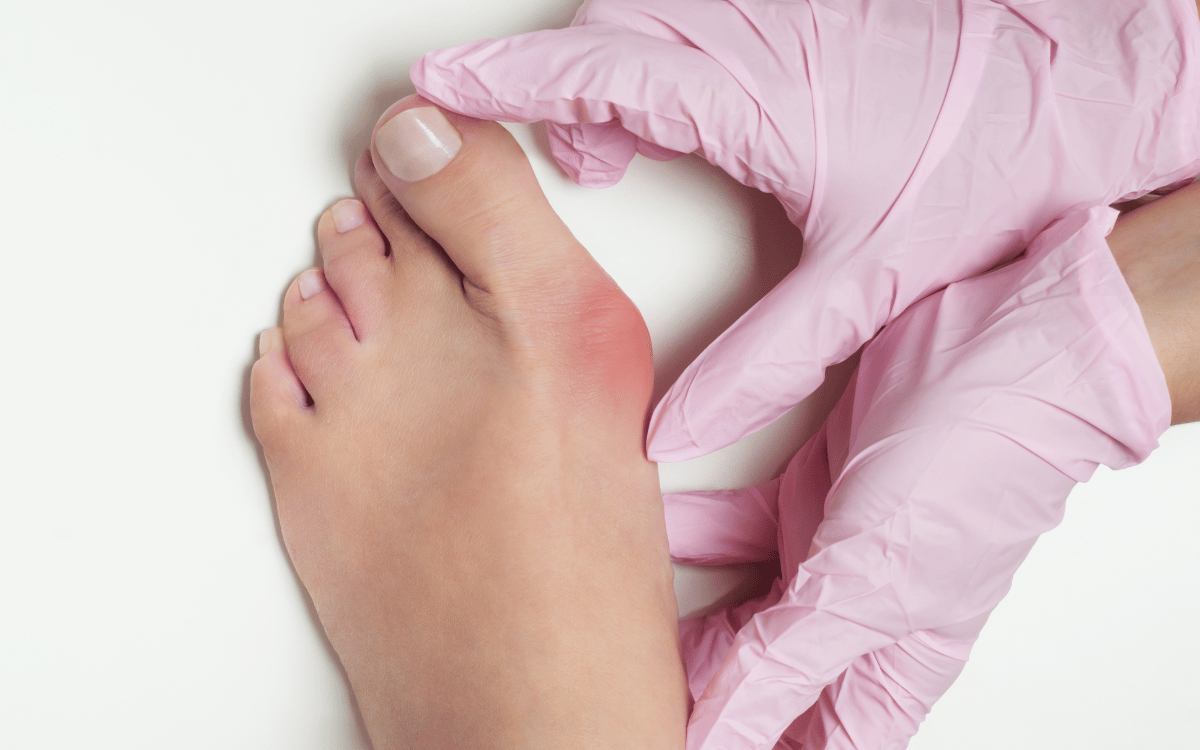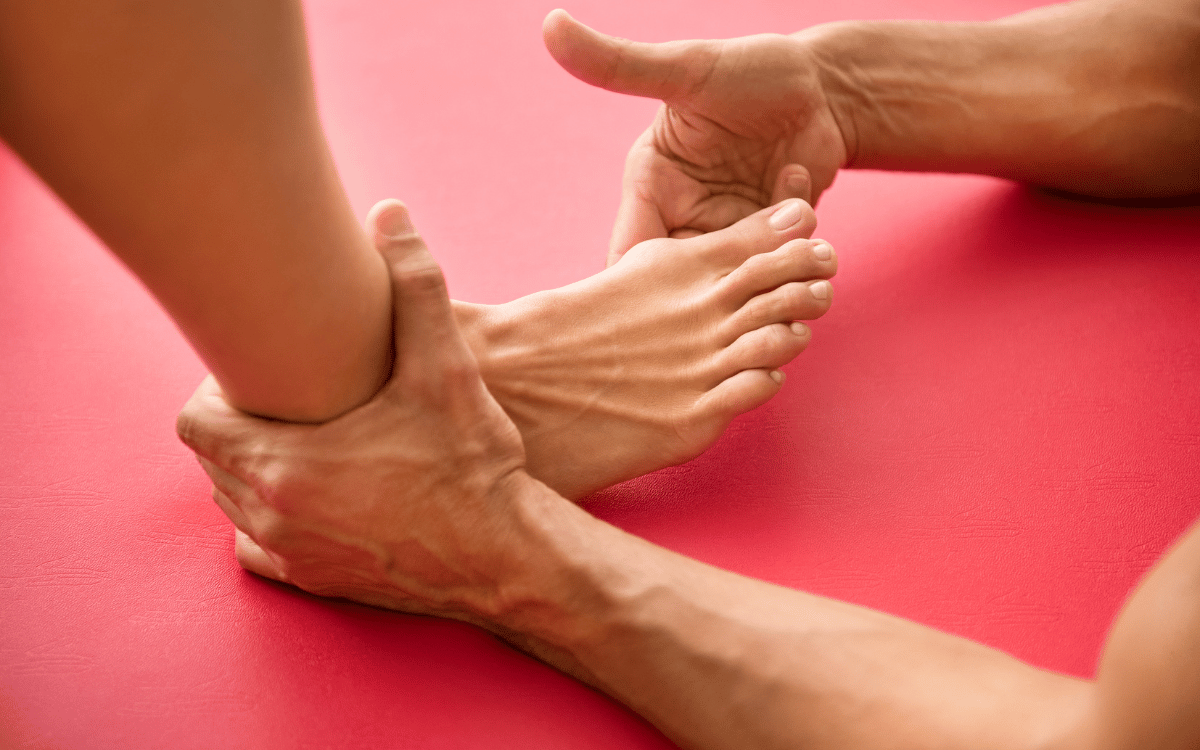
During your training, and during the walk itself, you will be putting the muscles of your feet and calves under a lot of pressure. The muscles will tighten up the more you use them. Do the following exercises as much as possible to help loosen up the muscles.
Tennis Ball
Roll a tennis ball (or any other ball) on the bottom of your foot, applying pressure down through the ball and rolling from heel to toe. Make sure you get the full length of the foot. Then roll the ball in circles around the ball of your foot, then the middle of the foot and lastly the heel of the foot. Roll from heel to toe for 60 seconds, and then repeat each of the three circles for 20 seconds each. Do this to both feet at least twice a day. You can do this exercise much as you can with the above being the minimum amount of time you should spend on each foot.
Calf stretches
Stand about 30 cm from a wall, leaning onto it with both hands on the wall. Stretch one leg back keeping the leg straight with the heel on the ground. This will stretch one of the muscles that make up the calf. To stretch the other muscle of the calf, bring your back leg in towards the front leg about halfway, squat down keeping your back heel on the ground. Do this to both sides, holding each stretch for at least 30 seconds. Again, you can’t overdo this stretch, so do it as much as you can.
For a video on how to do the tennis ball and calf stretches follow this link www.alternativefootsolutions.com.au/exercises/
These exercises can be done before the walk, while you’re training, and also after you finish the walk, to help you recover.
Having a good pair of shoes on a long walk is great, but it doesn’t matter what shoes you have if they are the wrong size. Keep the following points in mind when buying shoes:
- The first thing to keep in mind when buying shoes is that your feet can be different sizes. Most people have one foot that is larger than the other one. This can be a difference of up to half a size. Always buy your shoe for your bigger foot.
- Secondly, keep in mind that your feet change size throughout the day. The more you use your feet, the more blood will flow to them, which can change their size. Again, this can be up to half a size. It’s therefore important to buy your shoes when your feet have expanded. This is going to be after you have been exercising or on your feet for a while, so buy your shoes in the afternoon or after you’ve been exercising.
- Lastly, shoes aren’t designed to fit like a glove. Make sure you give your foot some room to move. This means you need to buy your shoe for your bigger foot, when it has expanded and then still allow some room.
If you decide to get new shoes before the Oxfam walk, make sure you buy them well before the walk so you can use them a few times and get used to them. It would not be a good idea to use new shoes for the first time on the walk.
If you’re participating in the Oxfam walk and want to get your feet checked, call us on (02) 8966 9300 and mention this article to get an initial assessment for $35 instead of the usual $95.
If you are participating in the Oxfam walk and don’t want to end up with painful feet, these tips will help make your walk a breeze. With less than a month to go, my advice is to put them into practice as soon as possible.
During your training, and during the walk itself, you will be putting the muscles of your feet and calves under a lot of pressure. The muscles will tighten up the more you use them. Do the following exercises as much as possible to help loosen up the muscles.
Tennis Ball
Roll a tennis ball (or any other ball) on the bottom of your foot, applying pressure down through the ball and rolling from heel to toe. Make sure you get the full length of the foot. Then roll the ball in circles around the ball of your foot, then the middle of the foot and lastly the heel of the foot. Roll from heel to toe for 60 seconds, and then repeat each of the three circles for 20 seconds each. Do this to both feet at least twice a day. You can do this exercise much as you can with the above being the minimum amount of time you should spend on each foot.
Calf stretches
Stand about 30 cm from a wall, leaning onto it with both hands on the wall. Stretch one leg back keeping the leg straight with the heel on the ground. This will stretch one of the muscles that make up the calf. To stretch the other muscle of the calf, bring your back leg in towards the front leg about halfway, squat down keeping your back heel on the ground. Do this to both sides, holding each stretch for at least 30 seconds. Again, you can’t overdo this stretch, so do it as much as you can.
For a video on how to do the tennis ball and calf stretches follow this link www.alternativefootsolutions.com.au/exercises/
These exercises can be done before the walk, while you’re training, and also after you finish the walk, to help you recover.
Having a good pair of shoes on a long walk is great, but it doesn’t matter what shoes you have if they are the wrong size. Keep the following points in mind when buying shoes:
The first thing to keep in mind when buying shoes is that your feet can be different sizes. Most people have one foot that is larger than the other one. This can be a difference of up to half a size. Always buy your shoe for your bigger foot.
Secondly, keep in mind that your feet change size throughout the day. The more you use your feet, the more blood will flow to them, which can change their size. Again, this can be up to half a size. It’s therefore important to buy your shoes when your feet have expanded. This is going to be after you have been exercising or on your feet for a while, so buy your shoes in the afternoon or after you’ve been exercising.
Lastly, shoes aren’t designed to fit like a glove. Make sure you give your foot some room to move. This means you need to buy your shoe for your bigger foot, when it has expanded and then still allow some room.
If you decide to get new shoes before the Oxfam walk, make sure you buy them well before the walk so you can use them a few times and get used to them. It would not be a good idea to use new shoes for the first time on the walk.
If you’re participating in the Oxfam walk and want to get your feet checked, call us on (02) 8966 9300 and mention this article to get an initial assessment for $35 instead of the usual $95.



